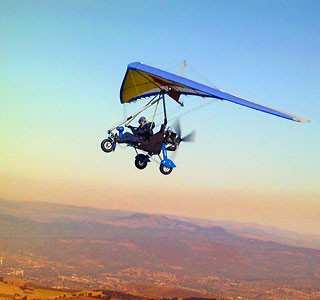ATP-Rated Pilot Was Fatally Injured
The NTSB has released its preliminary report from an accident involving a Solo Wings Windlass weight-shift-control aircraft accident in Dalton, GA September 28th which fatally injured the pilot of the aircraft.

According to the report, the aircraft owner, who was not the pilot of the accident flight, told the NTSB he purchased the aircraft in 1998 and had accumulated about 200 total flight hours on the aircraft before putting it into storage for about 10 years. When the accident pilot expressed an interest in flying the aircraft and started taking lessons in weight-shift control aircraft, the owner took the aircraft out of storage and replaced the fuel lines, fuel filter, tires, tubes, wing spar bungie cord, primer, throttle cable and battery. He had flown the aircraft 4-5 hours since those repairs, with no anomalies noted. On the day of the accident, the owner returned from a 30-minute flight and the pilot asked if he could fly the aircraft. The pilot had not previously flown in the accident aircraft. The owner questioned if he was ready, to which the pilot responded, "Yes," and the owner agreed.
The owner witnessed the accident flight and stated that the aircraft rotated about 300 ft down the turf runway, and then climbed to an altitude above tree level. The aircraft then turned left and seemed to "falter in the turn" before falling to the ground.
A witness located on the property adjacent to the airport observed the aircraft fly south before making an easterly turn toward his property. He stated that the aircraft "lost lift in the turn and seemed to stall," then made an uncontrolled, turning descent toward the ground. He stated that the engine "revved higher than normal" at the time of the turn.
The pilot's flight instructor reported that he had provided about 14 to 16 hours of flight instruction to the pilot in the two months preceding the accident. He considered the pilot's flying skills to be excellent and stated that the pilot was ready for a check ride with another flight instructor to demonstrate proficiency for a weight-shift category endorsement. However, the pilot had not performed such a check ride prior to the accident.
Initial examination of the accident site and wreckage by a Federal Aviation Administration (FAA) inspector revealed that the aircraft came to rest inverted beyond a tree line and in a fenced pasture located about 450 ft east of runway 17. The wing remained largely intact; however, the structural tubes were bent and fractured in several locations. The landing gear was separated from the fuselage. An initial impact mark and one of the main landing gears were located about 10 ft from the main wreckage. Grass farther along the debris field from the main wreckage appeared blighted, consistent with fuel spillage.
According to FAA airmen records, the pilot held an airline transport pilot certificate with a rating for airplane multi-engine land, with commercial pilot privileges for glider and airplane single-engine land. He also held a flight instructor certificate with a rating for airplane single-engine. He was issued an FAA first-class medical certificate on August 28, 2018. At that time, the pilot reported 18,870 hours of total flight experience.
The two-seat weight-shift control aircraft was equipped with a cable-braced hang glider-style high-wing, tricycle landing gear, and a single Rotax 503, 50-horsepower engine in a pusher configuration.
The wreckage was retained for further examination.
(Source: NTSB. Image from file)
 Airborne 07.02.25: TikToker Arrested, Vietnam A/L Ground Hit, ATC Modernization
Airborne 07.02.25: TikToker Arrested, Vietnam A/L Ground Hit, ATC Modernization Airborne Affordable Flyers 07.03.25: Sonex HW, BlackShape Gabriel, PRA Fly-In 25
Airborne Affordable Flyers 07.03.25: Sonex HW, BlackShape Gabriel, PRA Fly-In 25 ANN's Daily Aero-Term (07.07.25): Discrete Code
ANN's Daily Aero-Term (07.07.25): Discrete Code Classic Aero-TV: DeltaHawk Aero Engine Defies Convention
Classic Aero-TV: DeltaHawk Aero Engine Defies Convention ANN's Daily Aero-Linx (07.07.25)
ANN's Daily Aero-Linx (07.07.25)



